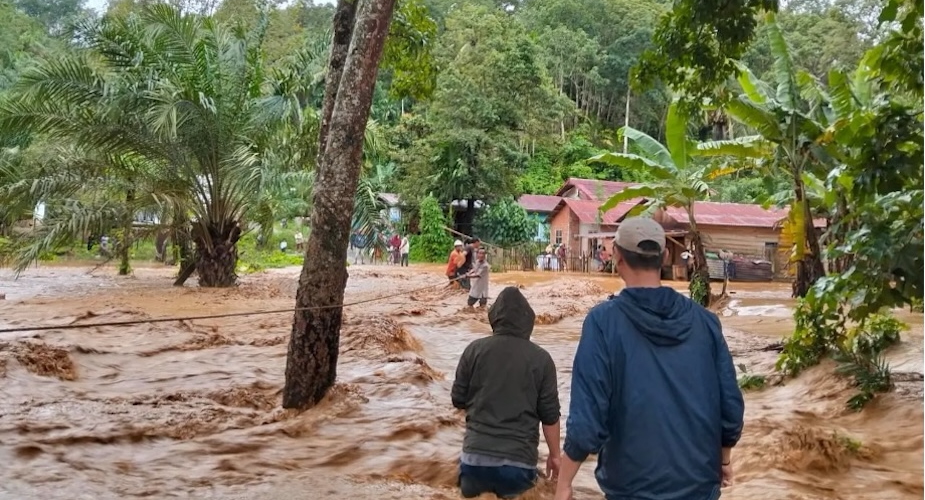Better assessment could provide the answer to problems caused by the rapid expansion of places available in Indonesian public medical schools
Nur Afrainin Syah
Students busy in the laboratories of Andalas University’s Facultyof MedicineAndalas University IT staff |
Indonesians have long held great respect for medical doctors, who they believe to be trustworthy and wise. But recently an additional perception has emerged. Becoming a doctor is now seen as a way to become rich. And the number of medical schools – now 52 in total – has increased rapidly to meet demand from parents who hope their children will become doctors. In addition, more and more students are being offered places in Indonesia’s 25 public medical schools as a result of a special extension program, developed to capitalise on parents’ willingness to pay. Whereas ‘standard’ students are chosen through a national selection process, the extension program allows the schools to accept students who fail national selection through a less competitive local university-run process. As a result of this program, student numbers are increasing eight to ten times faster than the increase in medical teachers.
The government’s extension program, which it sees as a way to respond to calls for better health services, provides enormous financial benefits to Indonesia’s poorly-funded public medical schools, as students accepted through it pay much higher admission and tuition fees than their nationally-competitive counterparts. Medical schools use this cash to improve their teaching and learning facilities such as laboratories, libraries, information technology and discussion rooms, as well as funding professional development for staff. On the surface, it appears that this injection of funds benefits all medical students. But the reality is more complicated. The rapid expansion in student numbers under the extension program has put incredible strain on the human and physical resources of medical schools and teaching hospitals. And as a consequence, students do not get enough supervision nor sufficient experience to deal with patients.
Medical schools' failure to ensure that graduates are competent doctors potentially puts patient safety at risk
Medical schools’ failure to ensure that graduates are competent doctors potentially puts patient safety at risk. But it also causes problems for graduates, who are required to sit the Indonesian Doctor Competency Examination (UKDI) conducted by the Indonesian Medical Council (KKI) before they can register to practice. Those who fail are often forced to sit the test repeatedly but they receive no further assistance to improve their skills between tests. The irony is that high UKDI failure rates – and the terrible waste of resources they represent – could be avoided. All it requires is a form of assessment that actually helps students to learn.
Assessing incompetence
As a rule, Indonesian medical schools rely heavily on a long case assessment to evaluate their students – a form of assessment is extremely limited in its ability to provide an overview of a students’ grasp of the extensive medical knowledge and clinical skills needed to practise medicine. To make matters worse, a single examiner decides whether a student is competent, leaving the outcome open to manipulation. The failure rate for these assessments is almost zero because medical academics don’t want to upset students and their families, especially those who have paid top dollar for their medical education. And teachers’ reluctance to fail poorly-performing students has led to an increase in the number of incompetent medical graduates.
A possible solution to this problem is to introduce a structure based on repeated applications of the Comprehensive Clinical Skills Assessment (CCSA), an assessment strategy used worldwide, including some training centres in Indonesia, in both undergraduate and postgraduate training. By administering a CCSA halfway through their training as well as at the end, teachers would have a chance not only to evaluate their students’ progress and the quality of their own teaching, but also to make decisions about how to allocate their stretched resources. Perhaps most importantly, early testing would ensure that there is still time to provide intensive supervision for students who have not performed so well, while the standardised assessment procedure would help counteract clinicians’ unreliable ratings of students and provide better evidence of the students’ actual performance. And once skills deficits are identified, they can be addressed through supervised practice within a Work-place Based Assessment (WBA) in which teaching and learning is closely integrated to provide specific, accurate and structured feedback, which would simply be too resource-intensive to provide to all students.
In this way, limited resources could be effectively and efficiently allocated to students who really need assistance, leading to more competent doctors who are worthy of their patients’ trust.
Nur Afrainin Syah (nsya5195@uni.sydney.edu.au) teaches human anatomy and is a member of the Medical Education Unit at Andalas University.
This article is part of our Health in Indonesia mini-series.












